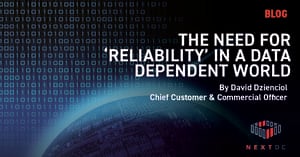Navigating the Digital Landscape: Formulating a Future-Ready Data Centre Strategy
In the dynamic digital age, the blueprint for organisational success lies in a meticulously designed data centre strategy. This comprehensive guide delves into the fundamental inputs and considerations essential for formulating a resilient and future-ready data centre strategy. By harmonizing with business goals, addressing pivotal questions, and embracing sustainability, organisations can forge a strategy that not only caters to present requirements but effortlessly evolves to meet future challenges and opportunities.
In the digital age, a meticulously designed data centre strategy is the linchpin for organisational success. This white paper delves into crucial inputs and considerations necessary to formulate a robust and future-ready data centre strategy. By aligning with business goals, addressing critical questions, and embracing sustainability, organisations can ensure their strategy not only meets current needs but also seamlessly adapts to future challenges and opportunities.
Strategic Insights: Numbers Shaping the Data Centre Industry
In a recent release, the Uptime Institute unveiled its Annual Outage Analysis 2023 report, shedding light on the escalating costs, frequency, and duration of outages. The report underscores the significant role of cloud and digital services in outages, highlights the limitations of service providers, and emphasizes the persistent challenges in handling failures within intricate distributed architectures.
Here, we outline key insights from the report, followed by our perspective on crucial solutions:
1. Increasing Frequency of Outages
- According to EMA, 41% of organisations encounter at least one substantial outage monthly.
2. Escalating Costs of Outages:
- In 2022, a staggering 70% of outages incurred costs exceeding $100,000, compared to 40% in 2019. This upward trend is projected to persist with the growing reliance on digital services.
3. Prolonged Outage Resolution Times:
- In 2022, 32% of outages extended beyond 12 hours, with 16% surpassing the 48-hour mark. Extended outages pose severe consequences for businesses and their clientele.
4. Shortcomings of Legacy Service Providers
- The report suggests that many service providers fall short of service level agreements (SLAs), emphasizing that SLAs are not reliable indicators of future service provider availability.
5. Dominance of Cloud and Digital Services
- Cloud, Software as a Service (SaaS), and digital services contributed to 80% of public cloud outages in 2022, rising from 66% in 2016. These services continue to play an expanding and pivotal role in causing outages.
6. Shared Responsibility of Software and Humans
- Software or configuration errors accounted for 65% of outages in cloud services. Additionally, over 87% of outages were attributed to human error and/or management failures, underscoring the need for enhanced tools and processes to mitigate such errors.
Anticipated Growth in the Data Centre Market
The burgeoning digital economy and the exponential rise in data consumption have spearheaded the growth of the Mega Data Center Market. According to The "Mega Data Centre Market Size & Share Analysis - Growth Trends & Forecasts (2023-2028)" report analysis, the market, valued at USD 23.23 billion in 2023, is projected to expand to USD 29.34 billion by 2028, advancing at a Compound Annual Growth Rate (CAGR) of 4.78% during the forecast period.
Infrastructure Sustainability
According to Gartner, 75% of organisations will have implemented a data centre infrastructure sustainability program by 2027 to drive cost optimisation and manage stakeholder pressures. This figure has drastically increased from less than 5% in 2022.
Navigating the Data Center Landscape: Trends, Challenges, and Sustainability Imperatives
Navigating the data centre landscape is critical, as revealed by the recent release of the Uptime Institute's Annual Outage Analysis 2023 report. This comprehensive review highlights alarming trends in data centre outages, drawing attention to the rising costs, increased frequency, and extended resolution times. The report places significant emphasis on the role played by cloud and digital services in these outages, emphasizing the need for refined strategies in managing these integral technological components. Additionally, legacy service providers face scrutiny for failing to meet service level agreements, prompting a reassessment of reliability metrics.
As the data center market is in the braces for substantial growth amid the digital revolution, the importance of infrastructure sustainability becomes pronounced. Gartner's projection that 75% of organisations will implement sustainability programmes by 2027 underscores the industry's heightened focus on cost optimisation and addressing stakeholder pressures. In navigating this evolving landscape, businesses must not only anticipate market growth but also prioritise robust strategies to mitigate outage challenges and embrace sustainability measures for a resilient future.
Unlocking the Digital Frontier
In the dynamic theatre of the digital age, the surge in data volumes is nothing short of a seismic force, demanding innovative solutions for storage, management, and real-time processing. The days of traditional proprietary data centres are fading, and sustainability and uptime stand as a beacon guiding the way to a successful digitalization journey.
The Pivotal Question
Whether steering the data centre ship internally or entrusting functions to external providers, the imperative is clear: sustainability isn't just a consideration; it's the compass leading to a future-ready and resilient digital landscape.
Navigating Modern Data Centre Complexities
As organisations navigate the complexities of an increasingly digital landscape, the formulation of a comprehensive data centre strategy has become imperative. This section of the article outlines the key inputs and considerations that organisations must take into account to develop a data centre strategy aligned with their overarching organisational objectives.
Driving Growth in the Data Centre Industry
The growth in the data centre industry is propelled by key factors such as cloud computing, edge computing, AI, and soaring data volumes. The confluence of these elements propels the industry into a phase of unprecedented growth and innovation.
Factors Driving Growth
-
Cloud Computing Revolution: Widespread adoption of cloud services transforms operational functions into strategic catalysts for growth.
-
Emergence of Edge Computing: Computing resources closer to data sources reduceal latency, enhancing real-time processing capabilities.
-
Soaring Data Volumes: Increasing data generated by businesses, individuals, and connected devices plays a pivotal role.
-
Technological Advancements: Growing reliance on data analytics and AI fuels the demand for robust data centres.
-
Market Dynamics in Australia: The Australian Data Centre Market is poised for substantial growth driven by digitalization, regulatory compliance, and the need for secure data storage.
The Data Centre Industry's Trajectory
In the dynamic digital landscape, the data centre industry is not merely thriving; it's charting an unparalleled trajectory of growth driven by pivotal factors. Cloud computing and the emergence of edge computing position data centres at the forefront of technological advancement. Concurrently, the surge in data volume shapes the design, capacity, and power consumption of data centres like never before.
Australian Data Centre Market Growth
According to the "Australia Data Center Market - Investment Analysis & Growth Opportunities 2023-2028" report from ResearchAndMarkets.com.
The Australiaal data center market is witnessing remarkable growth and is projected to soar to a value of $9.49 billion by 2028, compared to $6.31 billion in 2022, representing an impressive compound annual growth rate (CAGR) of 7.05% during the forecast period from 2022 to 2028.
Data Centres as Pivotal Hubs
Data centres have evolved into pivotal hubs, not merely storing and managing vast data repositories but becoming engines for extracting valuable insights through advanced analytics and artificial intelligence.
Sustainability and Uptime: Guiding Principles for Data Centre Strategy
As organisations navigate the complexities of an increasingly digital landscape, the formulation of a comprehensive data centre strategy has become imperative. Sustainability, coupled with the guiding principle of achieving zero downtime (Uptime), shapes this strategic approach. Data centre providers are now investing in cutting-edge technologies to enhance energy efficiency, curtail carbon footprints, and ensure uninterrupted operations for optimal operations continuity.
Data Centre Strategy Key Inputs
Developing a strategy for your data centre is crucial for effective digital transformation. Key inputs into the data centre strategy include:
1. Data Centre Architecture
Evaluation of the type of data centre architecture, including on-premises, colocation, cloud-based, or hybrid models. Recognising the data centre as the backbone of your company, it's vital to address scalability, data security, and budget constraints before determining the most suitable type for your objectives.
2. Operational Management
Devising a clear plan for day-to-day data centre operations, covering the strategic deployment of personnel and operational protocols.
3. Budgetary Considerations
Defining and allocating budgets for both data centre infrastructure and ongoing operations, balancing financial constraints with the need for scalability and innovation.
4. Data Mapping and Classification
Classifying data based on importance and computational resource requirements is crucial for an effective data centre strategy. Understanding the nature of data processing ensures strategic decisions in resource allocation.
5. AI and High-Performance Computing (HPC)
Ensuring the right facilities for successful AI and HPC deployment, including physical space, power resources, and effective cooling systems.
6. Latency and Performance
Considering latency in data processing response time, optimising efficiency by evaluating infrastructure output, server capacity, and factors affecting overall performance.
7. Connectivity
Recognising connectivity as a strategic necessity, creating an ecosystem where organisations play a key role in a dynamic network of accelerated data exchange, cost efficiency, and heightened security.
Embracing ESG Principles in Data Centre Strategy
In today's conscientious era, organisations focus on lessening their environmental impact and uplifting their Environmental Social Governance (ESG) performance. The Australian government's ambitious targets for data centres align with broader sustainability goals. Harmonizing strategies with environmental, social, and governance factors is crucial for a responsible and future-ready approach.
1. Energy Efficiency
Improving energy efficiency through measures such as server virtualisation, efficient cooling systems, and energy-efficient lighting.
2. Water Efficiency
Enhancing water efficiency by utilizing recycled water for cooling and optimising systems to minimize water consumption.
3. Renewable Energy
Leveraging renewable energy sources like solar, wind, or hydropower to counter carbon emissions.
4. Waste Management
Efficiently managing electronic waste through recycling, refurbishing, and responsible disposal, complying with regulations.
5. Community Engagement
Building strong connections with local communities, adopting sustainable practices, and collaborating on initiatives for mutual benefit.
6. Data Privacy and Security
Safeguarding data privacy and security with rigorous measures, access controls, encryption, and compliance with regional and industry-specific regulations.
Questions to Progress Your Data Centre Strategy
1. Core Business Objectives
Understanding overarching business objectives ensures alignment with organisational goals and growth aspirations.
2. Capacity Planning
Analysing current workloads and growth projections informs decisions related to capacity, scalability, and resource allocation.
3. Emerging Technologies
Keeping an eye on technological advancements ensures adaptability and leverage of emerging innovations for a competitive advantage.
4. Cost Optimisation
Balancing budget constraints with efficiency ensures financial sustainability aligned with overall organisational goals.
5. Security Measures
Incorporating robust security measures and compliance protocols to safeguard sensitive information and uphold legal standards.
6. Operational Efficiency and Sustainability
Optimising operations for efficiency and aligning with sustainability goals contributes to a positive corporate image and environmental responsibility.
Start Your Transformation Journey
Embark on a transformative journey to modernise your data centre with NEXTDC as your trusted guide. Achieve a smart, effective IT overhaul with experienced advisors, suggesting alternatives, and identifying important areas for infrastructure investment.
Why Choose NEXTDC for Your Data Centre Needs?
Dynamic Partner Ecosystem:
Leverage Australia's most extensive partner ecosystem with a community of 750+ partners to enable more connections with carriers, cloud providers, and IT service providers.
Hybrid Cloud Experience:
Empowering customers to leverage cloud-first strategies and optimise multi-cloud deployments to scale mission-critical IT infrastructure.
AI, High-Performance Computing and Edge Design:
NEXTDC is at the forefront of supporting Edge computing and High-Performance Compute (HPC) requirements, providing customised solutions to accelerate your AI journey.
100% Uptime:
The only data centre operator in the southern hemisphere with Tier IV Gold certification for Operational Sustainability, NEXTDC guarantees zero downtime for reliability and performance.
Data Centre Interconnectivity:
Secure, private, and direct access to Australia’s most connected range of global cloud providers, integrated with a nationwide network of data centre facilities.
World Class Design and Operations:
Internationally recognised for designing, constructing, and operating Australia’s market-leading Tier IV facilities, certified by globally renowned Uptime Institute.
Sustainability Driven:
Demonstrating a commitment to sustainability, NEXTDC prioritizes renewable energy sources, achieving leading standards such as 5-star NABERS energy efficiency ratings and TRUE certification.
DTA Certification for Government Agencies:
NEXTDC is certified by Australia’s Digital Transformation Agency (DTA), to ensure compliant and sovereign critical infrastructure choices for government at all levels.
Industry Recognition:
NEXTDC, a listed company on the ASX 100, stands out with industry peer awards as the region's most innovative and customer-focused data centre provider.
Carbon Neutral Operations:
NEXTDC's corporate operations are certified carbon neutral under the Australian Government’s Climate Active Carbon Neutral Standard.
Efficiency and Cost Management:
Engineered for outstanding energy efficiency, NEXTDC data centres deliver industry-leading benchmarks for minimising operational cost and total cost of ownership.



